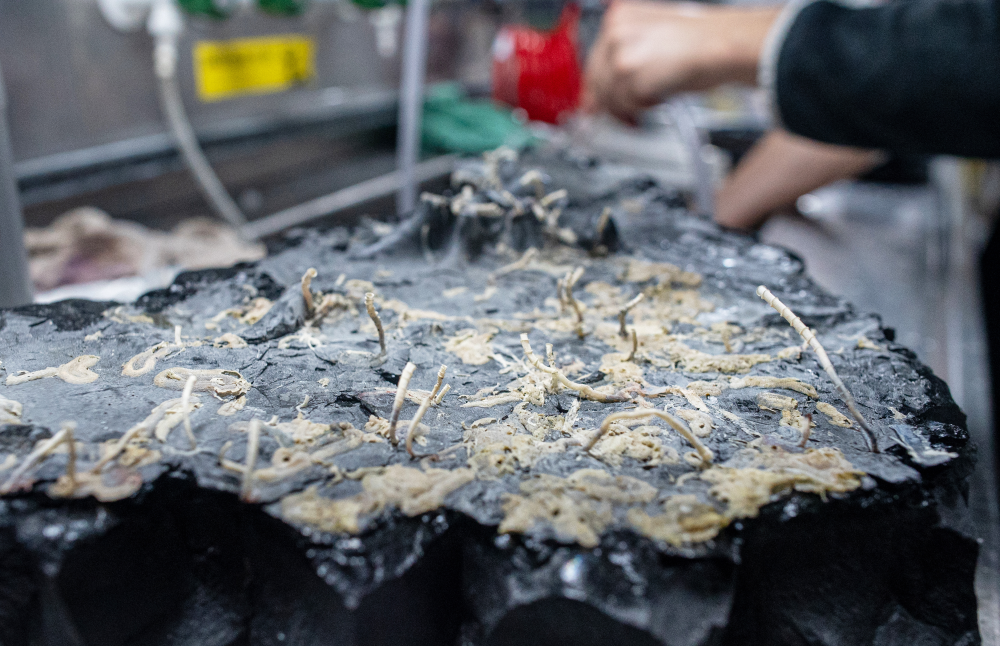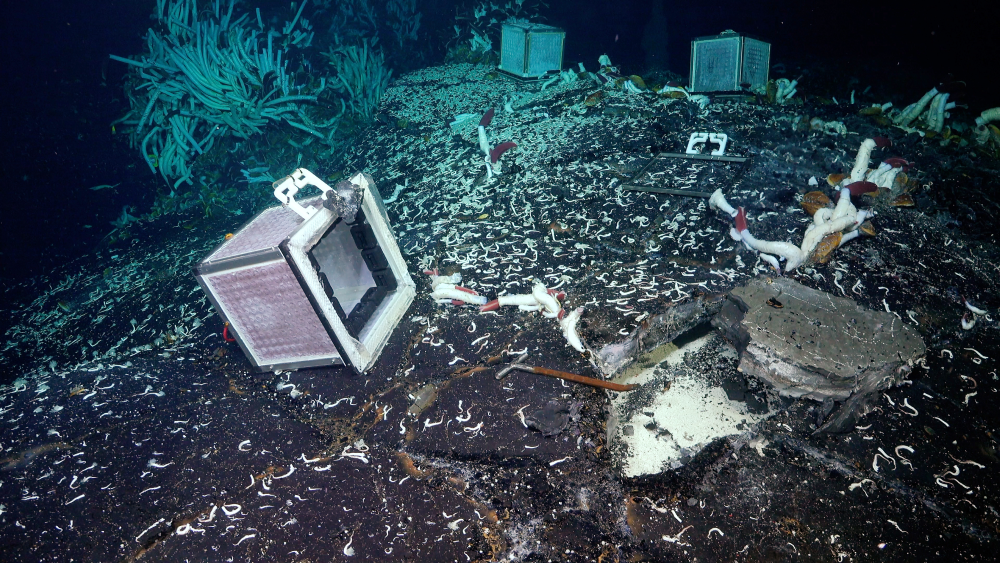An astonishing new ecosystem has just been announced following a discovery inside volcanic caves off Central America. It took the Schmidt Ocean Institute’s (SOI) research vessel Falkor (too) 30 days to complete its expedition, and brought home one of the biggest discoveries in 46 years of studying hydrothermal vents.
Here, on the East Pacific Rise, an underwater robot was able to turn over sections of volcanic crust to reveal a new-to-science ecosystem teeming with worms, snails, and chemosynthetic bacteria that are seemingly thriving despite living in 25°C (75°F) water. It changes the way we now view hydrothermal vents, adding a whole new dimension with ecosystems existing both on their surface and underneath.
“On land, we have long known of animals living in caves underground, and in the ocean of animals living in sand and mud, but for the first time, scientists have looked beneath hydrothermal vents,” said SOI’s Executive Director, Dr Jyotika Virmani, in a statement sent to IFlScience. “This truly remarkable discovery of a new ecosystem, hidden beneath another ecosystem, provides fresh evidence that life exists in incredible places.”

The underside of a section of volcanic crust reveals some of the species living under the surface of hydrothermal vents.
It’s the first time life has been found underneath hydrothermal vents, which are hot volcanic springs found along the seabed. The team also found evidence that surface species like tubeworms can travel underneath from the surface using vent fluid, enabling them to expand their range.
New hydrothermal vents can appear when tectonic activity sees the plates on Earth’s crust shift and crack. These cracks fill with seawater that gets heated by the magma, making it rise back to the seafloor.
We’ve long understood how new hydrothermal vents appear, but what had people scratching their heads was how the ecosystems that live on them emerge so rapidly. One of the foundational animals of these ecosystems is the tubeworm, but we’ve rarely found its young on hydrothermal vent surfaces.
This new and pivotal discovery about how tubeworms can travel beneath the hydrothermal vent surface goes some way to explaining how they colonize new habitats. They were able to reach their conclusions with the aid of the underwater robot, ROV SuBastian, which glued boxes over cracks in the Earth’s crust and was able to collect some of the animals living below the surface.

Experiments code-named “Mesh Box Staining Gadgets” were sealed to the seafloor at the Tica Vent to see what, if any, life was beneath.
“Our understanding of animal life at deep-sea hydrothermal vents has greatly expanded with this discovery, ” said expedition lead Dr Monika Bright of the University of Vienna. “Two dynamic vent habitats exist. Vent animals above and below the surface thrive together in unison, depending on vent fluid from below and oxygen in the seawater from above.”
The discovery of a new ecosystem is always an exciting one, but it also represents a new consideration in the ongoing debate over the safety of deep-sea mining. Some argue that the sea bed is the path of least destruction when it comes to mining the planet for the metals needed to supply the green battery revolution, but others warn we have a long way to go before we can establish the possible harms of digging in the deep sea.
“The discoveries made on each Schmidt Ocean Institute expedition reinforce the urgency of fully exploring our ocean so we know what exists in the deep sea,” said Wendy Schmidt, president and co-founder of Schmidt Ocean Institute. “The discovery of new creatures, landscapes, and now, an entirely new ecosystem underscores just how much we have yet to discover about our Ocean –and how important it is to protect what we don’t yet know or understand.”
After all, as anyone who’s watched Underwater knows, drilling beneath deep-sea vents can end very badly.
Source Link: Life Has Been Found Beneath Hydrothermal Vents For The First Time